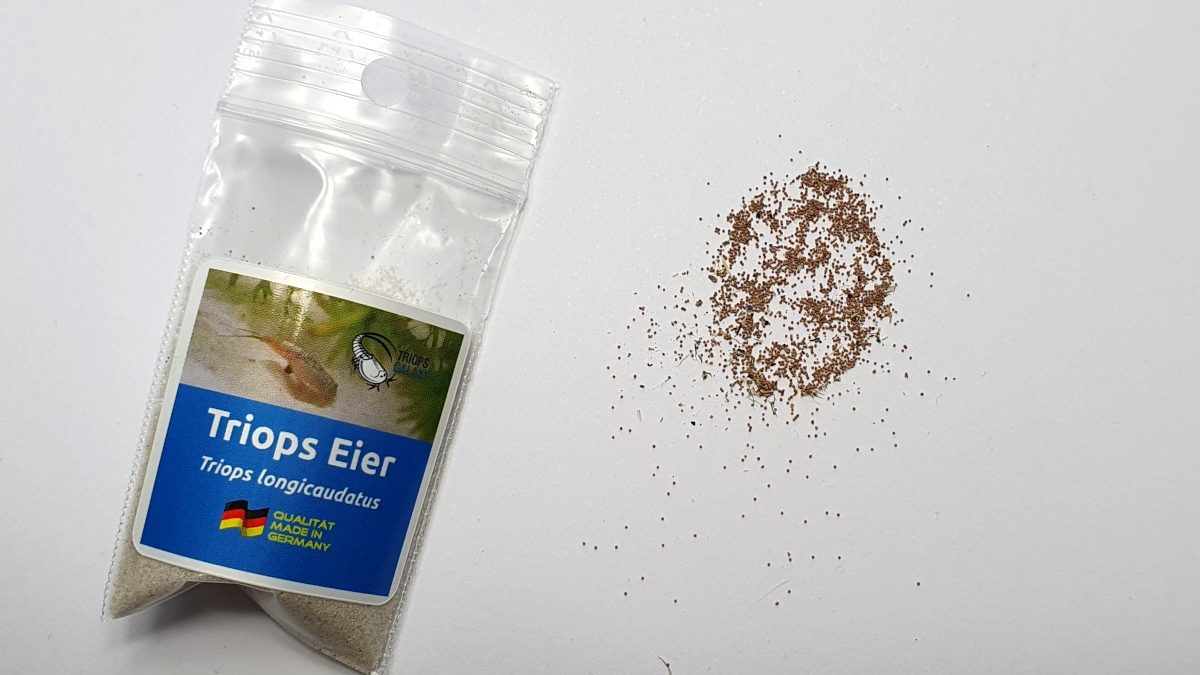Guide
The 5 biggest mistakes in Triops breeding: THIS is the harsh reality, but …
You don’t need much to breed Triops. A breeding kit with Triops eggs or pure eggs, water, a container and a light source such as a lamp. The Triops eggs are dumped into the water and simply left under a burning light for over 24 hours. After about 24 hours, the first nauplii have hatched and you can proudly present your first breeding of primeval crabs and give your children a treat. Unfortunately, breeding Triops is not as easy as described in this simplified example and a number of factors play a role. Especially beginners and people who breed Triops for the first time are quickly disappointed because the expectations differ fundamentally from the reality of Triops breeding. Here I would like to shed some light on the subject and tell beginners not to harbour false expectations, but also not to give up too quickly.

Misconception No. 1: Triops have a long life
Triops do not have a long life expectancy like fish. Armoured catfish can reach an age of five to 16 years, depending on the species, and sucker catfish like the brown antenna catfish can live up to 20 years. Guppies live for about three years. Our primeval crabs live between 30 and 90 days. Triops die after a maximum of three months and this should be taken into account before they look forward to a long life of the little Triops and are sad about their demise after such a short time. On the other hand, the short time does not create too strong a bond between the children and the Triops, so this can also be an advantage.
Misconception No. 2: Triops always hatch
In forums and comments it is often reported that nothing came of the breeding attempts and the nauplii died within a few days. Both the failure to hatch and the death of the nauplii can have natural causes that a breeder can hardly influence.
Even if you as a breeder follow all instructions exactly and do everything perfectly, it is no guarantee that the Triops will hatch.
Even a good approach does not always guarantee breeding success.
External factors such as thunderstorms or air pressure fluctuations can affect breeding and cause failure. Nevertheless, one should not give up, but dry the egg-sand mixture and start a new breeding attempt under different conditions.
Misconception No. 3: Nauplii hatch from all eggs
A common reason why nauplii do not hatch from the breeding sets is due to nature’s conservation of the species. Nature has developed a brilliant survival strategy for Triops, which in the wild live in puddles and pools of water created by seasonal flooding. Before the waters dry up, the females lay permanent eggs. These eggs are activated by renewed contact with water and a hatching impulse is triggered.
However, it is important to note that not all eggs are activated. Only about every fourth or fifth egg hatches into a nauplius. This strategy of nature ensures that other eggs do not hatch for many years and even decades. If all the eggs hatched at the same time, the Triops could not survive for many millions of years. If you buy a breeding batch of 50, 150 or 300 eggs, nauplii will never hatch from all of them. If 20 nauplii have hatched from 50 eggs, one can speak of success.
Misconception No. 4: You need a lot of technology
Some prospective breeders shy away from Triops breeding because they think they will have to spend a lot of money and invest in aquarium technology. In contrast, Triops breeding is quite undemanding and does not require a lot of technical equipment. During the first two weeks of breeding, you only need lighting, which can be done with an ordinary desk lamp. Later, you can buy a heater and use a filter, but the filter is not absolutely necessary.
→ More information can be found in the main article: Aquarium technology in Triops breeding
Misconception No. 5: Triops need to be fed properly
When feeding the Triops, the following applies: Less is more. Too much food can pollute the water and the water values can quickly change. Triops do not die if they have to do without food for a day and can tolerate a diet day.
→ More information can be found in the main article: Feeding triops
Conclusion
I hope to have cleared up some misunderstandings in this blog post and to have given beginners in Triops breeding the right information. Breeding Triops is not always easy and even from a good start the Triops will not hatch on their own. It requires patience and initiative. There will be setbacks, nauplii will not hatch or die within a few days. But that is part of it. That’s why Triops breeding is so exciting and with every attempt you learn something new and do it better the next time.
If you are planning a children’s birthday party or a school project and want to surprise the children with triops, you should never rely on a single approach, because this can go wrong for the reasons described above and nothing will hatch. Instead, you should experiment a little and gain experience or use several approaches with different types of water to avoid unpleasant surprises. All in all, breeding Triops is always exciting and fascinating because you have a piece of prehistoric times and past life on earth in your home.